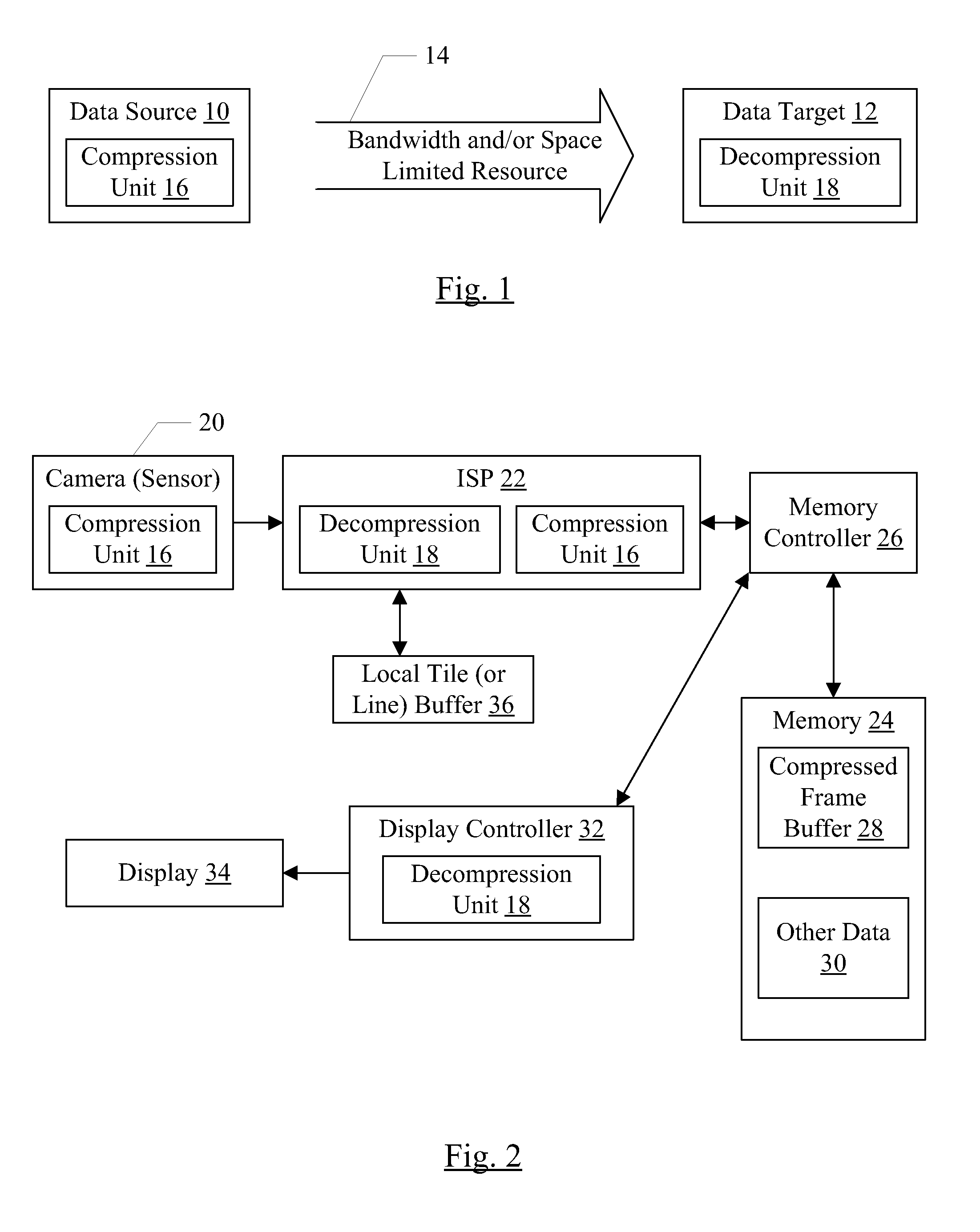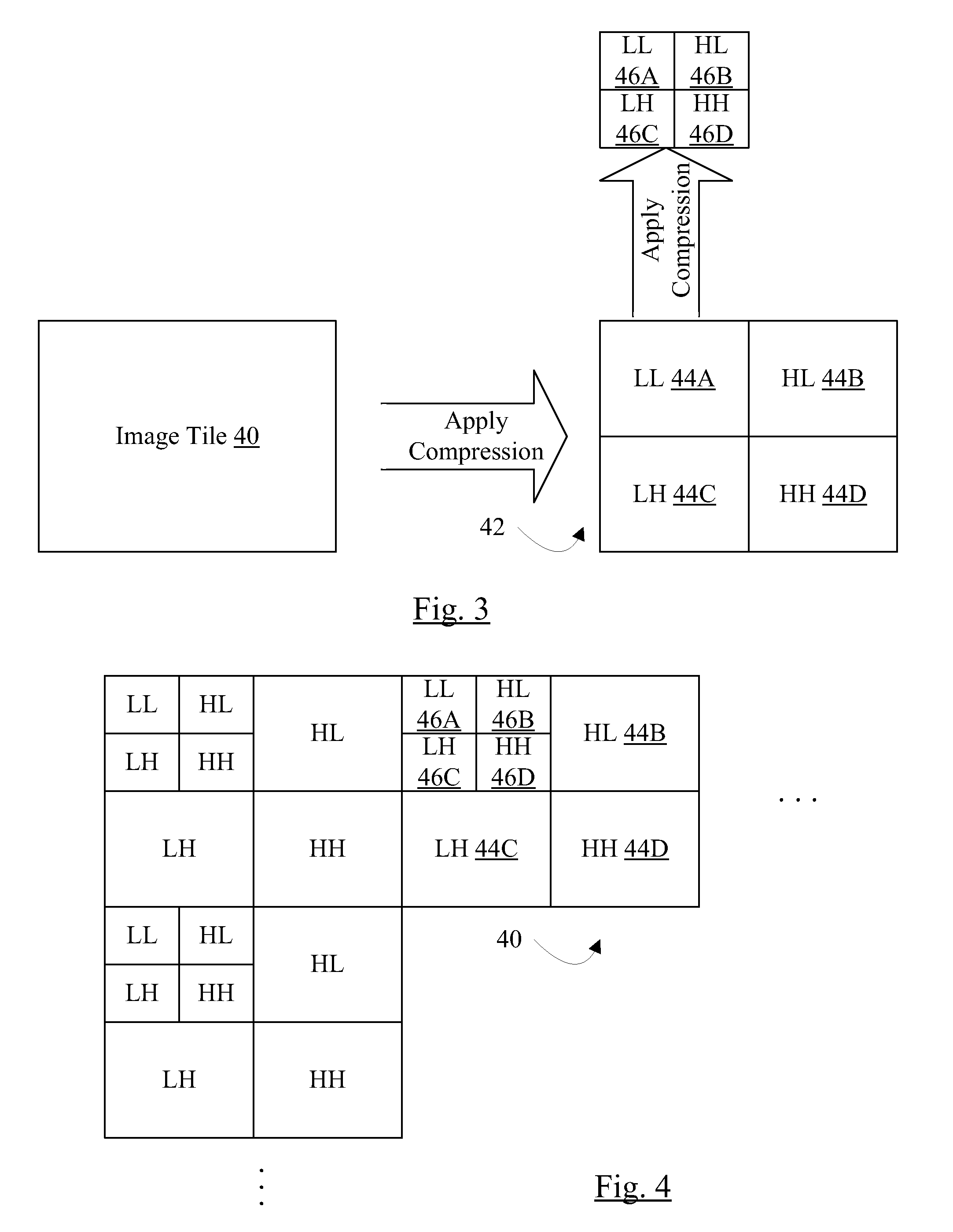Memory compression technique with low latency per pixel
a memory compression and pixel technology, applied in the field of memory compression for images, can solve the problems of increasing the footprint of images for display, the memory footprint of visual images captured and/or displayed by electronic devices, and the memory footprint of images is often significant, so as to achieve low latency and low latency. the effect of small hardwar
- Summary
- Abstract
- Description
- Claims
- Application Information
AI Technical Summary
Benefits of technology
Problems solved by technology
Method used
Image
Examples
Embodiment Construction
[0029]Turning now to FIG. 1, a block diagram is shown of a generic data source 10 and a generic data target 12 coupled via a channel 14 that includes at least one bandwidth-limited and / or space-limited resource. The data source 10 includes a compression unit 16, and the data target 12 includes a decompression unit 18.
[0030]Generally, the data source 10 may be configured to transfer data over the channel 14 to the data target 12. The data source 10 may generate the data (e.g. the data source 10 may be a sensor, such as a camera for graphical images), or may receive the data from other circuitry and may optionally process the data to transform the data in some defined fashion. The data source 10 may then compress the data using the compression unit 16. Generally, the compression may itself be a transformation of the data, reducing the size of the data in the transformation.
[0031]Compression may be lossless or lossy. With lossless compression, the original data may be recovered in its ...
PUM
 Login to View More
Login to View More Abstract
Description
Claims
Application Information
 Login to View More
Login to View More - R&D
- Intellectual Property
- Life Sciences
- Materials
- Tech Scout
- Unparalleled Data Quality
- Higher Quality Content
- 60% Fewer Hallucinations
Browse by: Latest US Patents, China's latest patents, Technical Efficacy Thesaurus, Application Domain, Technology Topic, Popular Technical Reports.
© 2025 PatSnap. All rights reserved.Legal|Privacy policy|Modern Slavery Act Transparency Statement|Sitemap|About US| Contact US: help@patsnap.com



